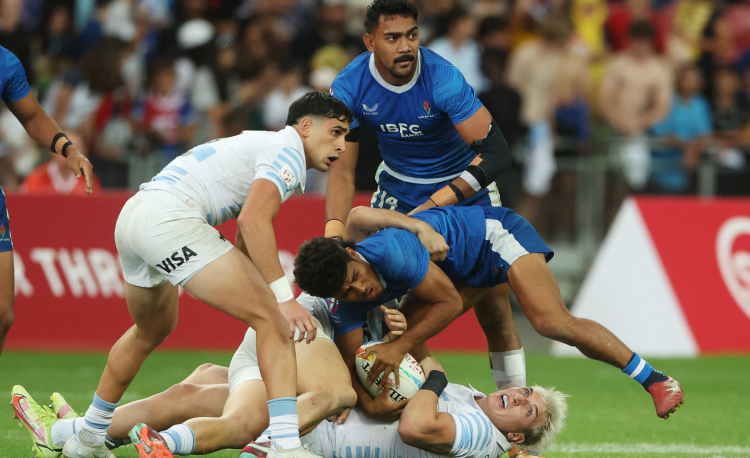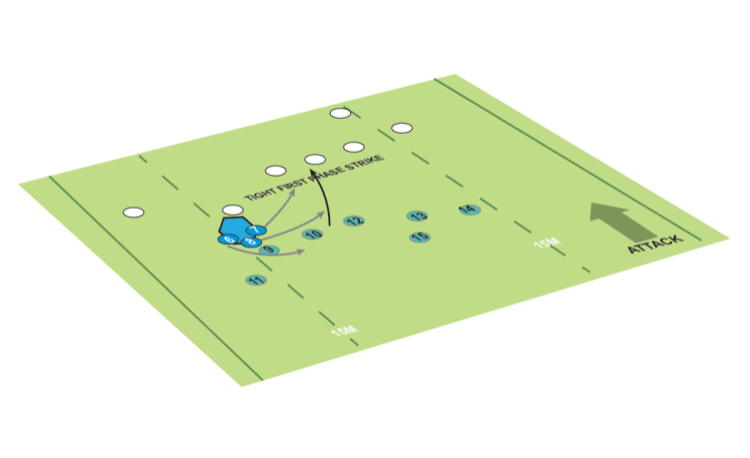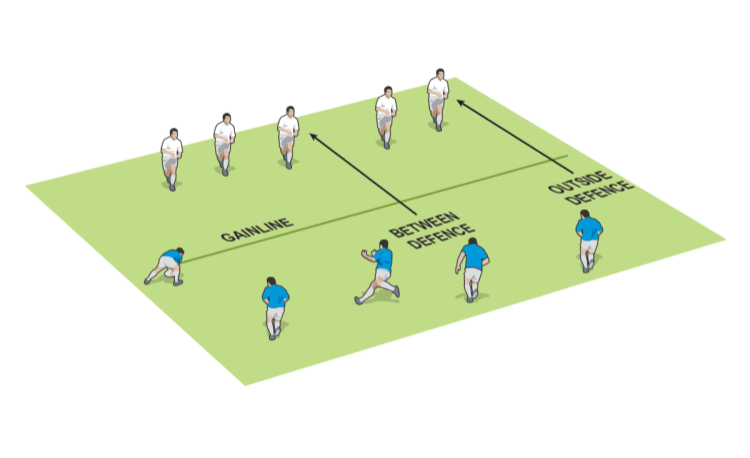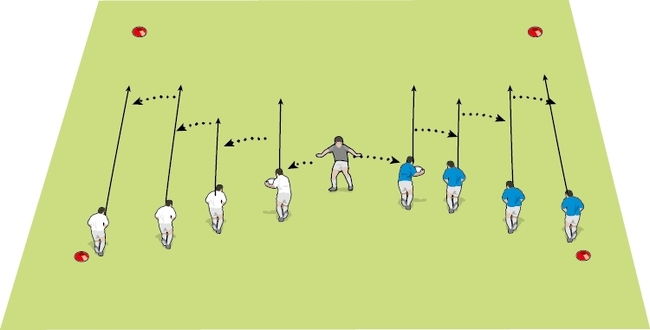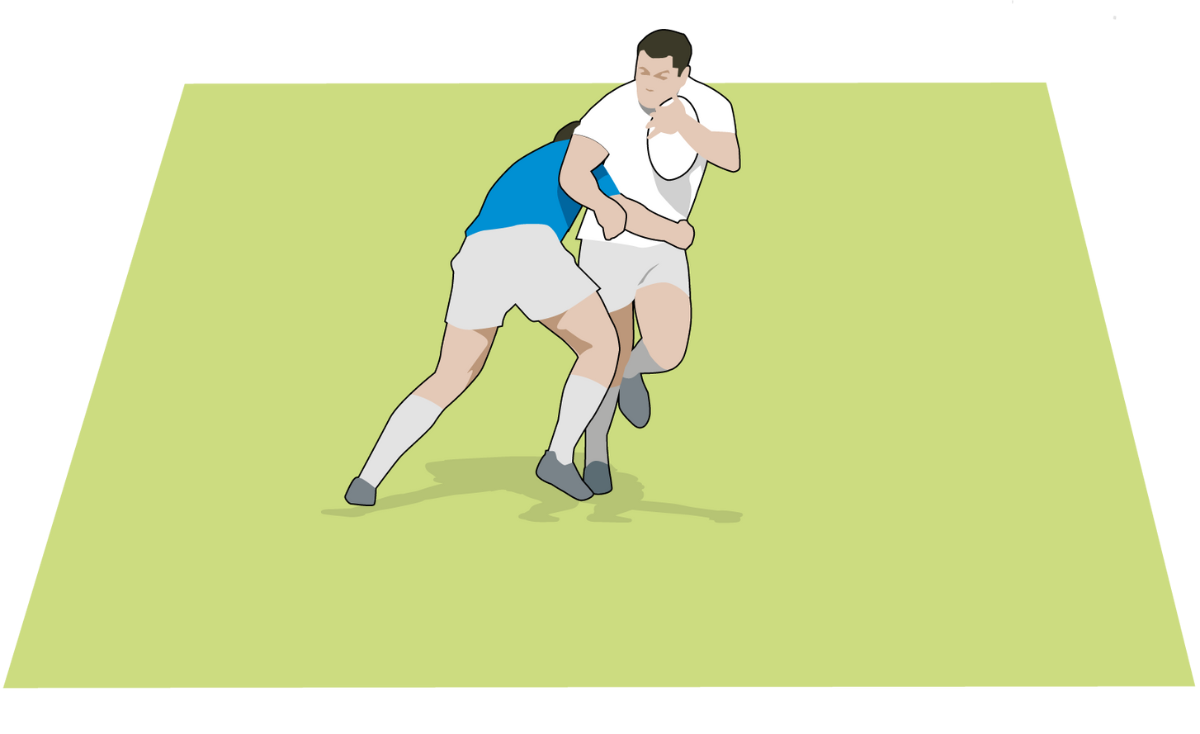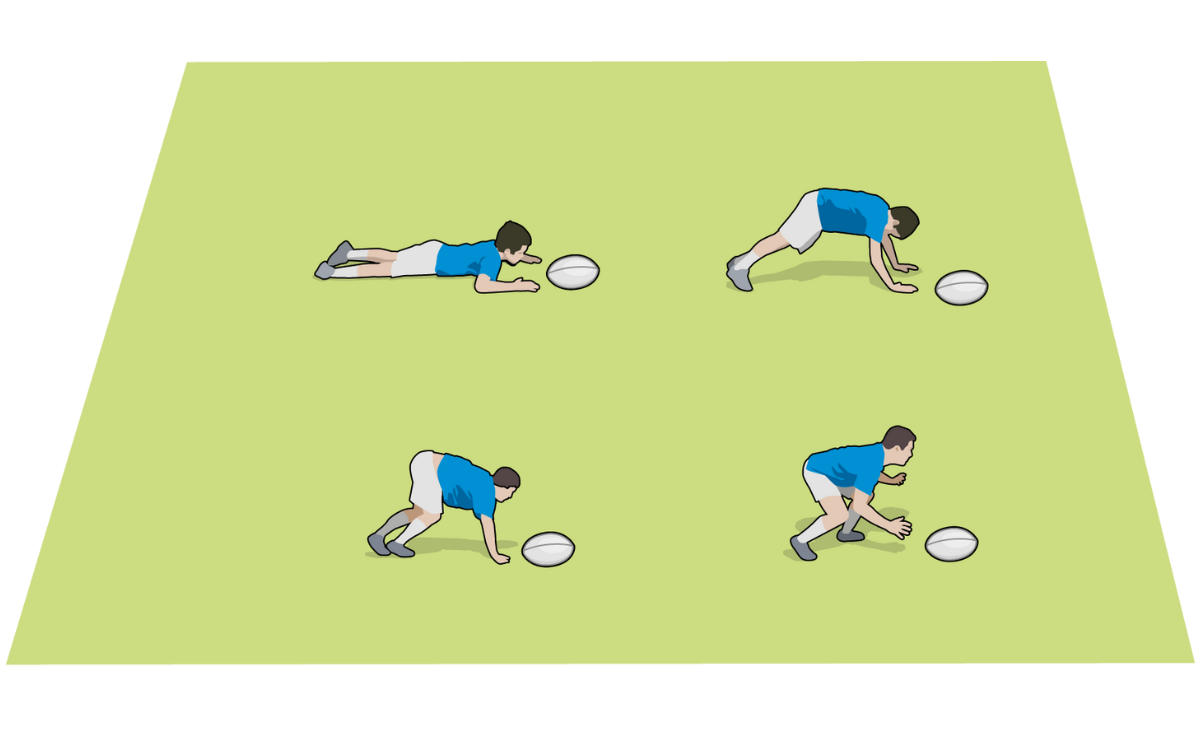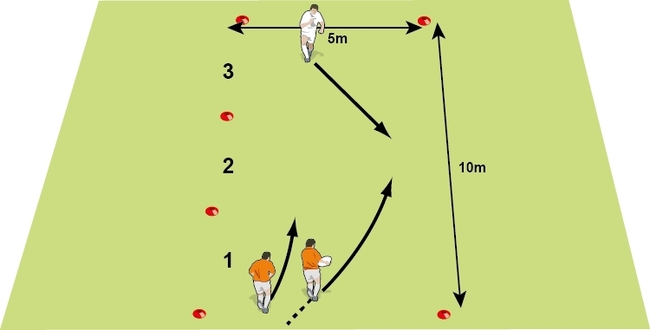Attacking from a slow ruck
Despite your best-laid plans, it is inevitable that during the game, your team will lose momentum and have to deal with slow ball. Here are four ways your team can rebuild momentum, gain ground and create space without kicking possession away.
Slow ruck ball is where the defence has time to reorganise after a tackle is made and the ruck is formed. This problem can be further magnified if your team are also well behind the gain line from the previous phase. You want solutions that mean you can disorganise the defence and retain possession.
USE THE BLINDSIDE
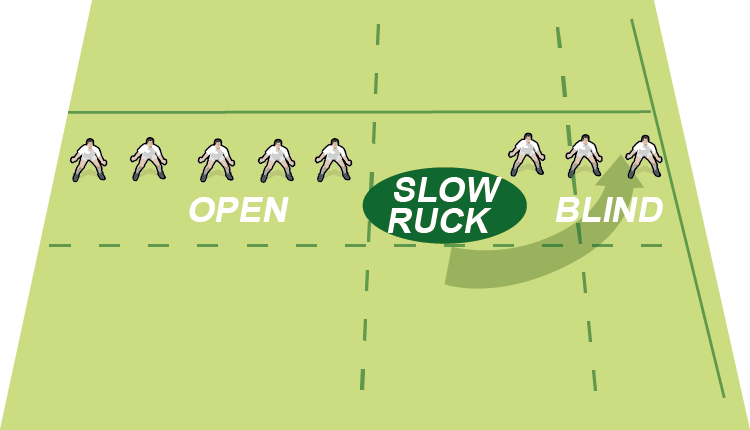
The blindside is often less well-policed and organised defensively. It is, therefore, possible to make ground by overloading your numbers against the defence.
If your team then goes through several attacks on the blindside, the opposition is likely drawn to that side to defend the attacks. This, in turn, can, eventually, free up more space on the openside.
Once this space occurs and is recognised, the play can switch to the openside, where there is more room and attacking spaces.
ATTACK THE FRINGE DEFENCE
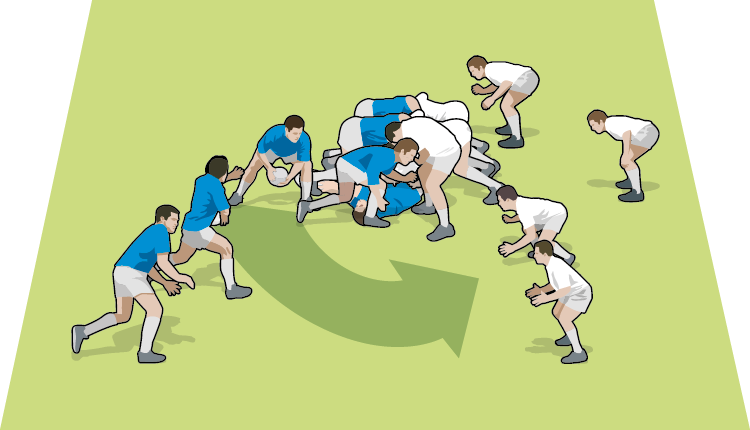
If the ball is slow, the opposition will likely be on their feet, defending strongly and with organisation.
In order to re-impose your attack, it is necessary to commit defenders over a number of very quick phases.
This can be done safely around the fringe of the ruck with the aim of starting to develop forward momentum.
All forwards, and possibly even some backs, need to be close to the ruck and ready to attack in mini-groups (or “pods”) of two to four players. They drive the ball carrier on as contact is made and clear out. Done well it will produce quick ball, momentum and possible opportunities.
If allowed at your level of the game, the “squeeze ball” may help maintain possession as it is harder for the opposition to get their hands on the ball.
SET UP A MAUL
Your players could set up a maul from the ruck. As with attacking the fringe defence, forwards must be close to the ruck.
It is important from the maul not to try to move forward too quickly. The ball carrier makes contact with the defenders who advance on him rather than him advancing on them. As this happens, the ball must be stripped backwards and a maul set up.
Players on the ground from the ruck need to get back on their feet quickly and join the maul to help it move forwards slowly. This, in turn, will draw in the defenders and create space beyond the maul. If defenders do not get drawn in, the maul should move forward.
SWITCH PLAY
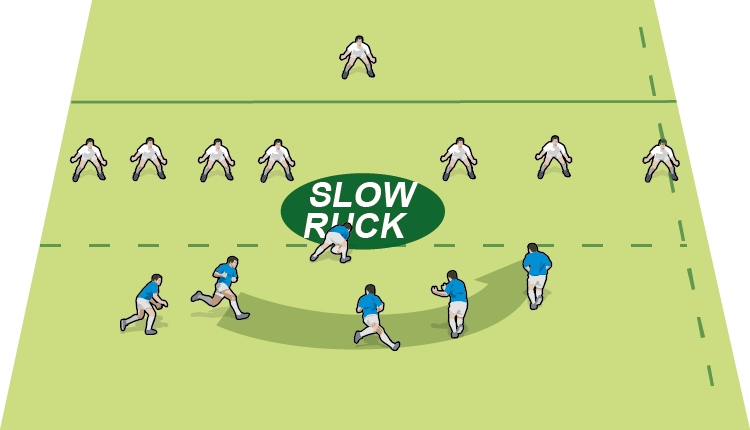
If play is static, particularly if there is space on either side of the ruck, the backs should avoid standing and watching the ruck, waiting for the ball to appear.
Moves that switch play from one side of the ruck to another can create confusion and opportunities. For example, a ruck is created from a play that moves left to right or right to left. This is the direction of the “flow”. A switch play makes the ball back the other way and goes “against the flow”.
Players on the side of the pitch that the ball is now going to can run lines back in toward the ruck. The other players wrapping around the ruck to join the attack should run wide but straight onto the ball.
This “in-around” attack can confuse. Some defenders are fixed by the attackers running in, and some are drawn out towards the attackers running around. Some defenders may even remain on the non-attacking side of the ruck, creating a numerical overlap. With intelligent ball handlers, the gaps can be exploited, and momentum created.
Newsletter Sign Up
Coaches Testimonials

Gerald Kearney, Downtown Las Vegas Soccer Club

Paul Butler, Florida, USA

Rick Shields, Springboro, USA

Tony Green, Pierrefonds Titans, Quebec, Canada
Subscribe Today
Be a more effective, more successful rugby coach
In a recent survey 89% of subscribers said Rugby Coach Weekly makes them more confident, 91% said Rugby Coach Weekly makes them a more effective coach and 93% said Rugby Coach Weekly makes them more inspired.
Get Weekly Inspiration
All the latest techniques and approaches
Rugby Coach Weekly offers proven and easy to use rugby drills, coaching sessions, practice plans, small-sided games, warm-ups, training tips and advice.
We've been at the cutting edge of rugby coaching since we launched in 2005, creating resources for the grassroots youth coach, following best practice from around the world and insights from the professional game.




